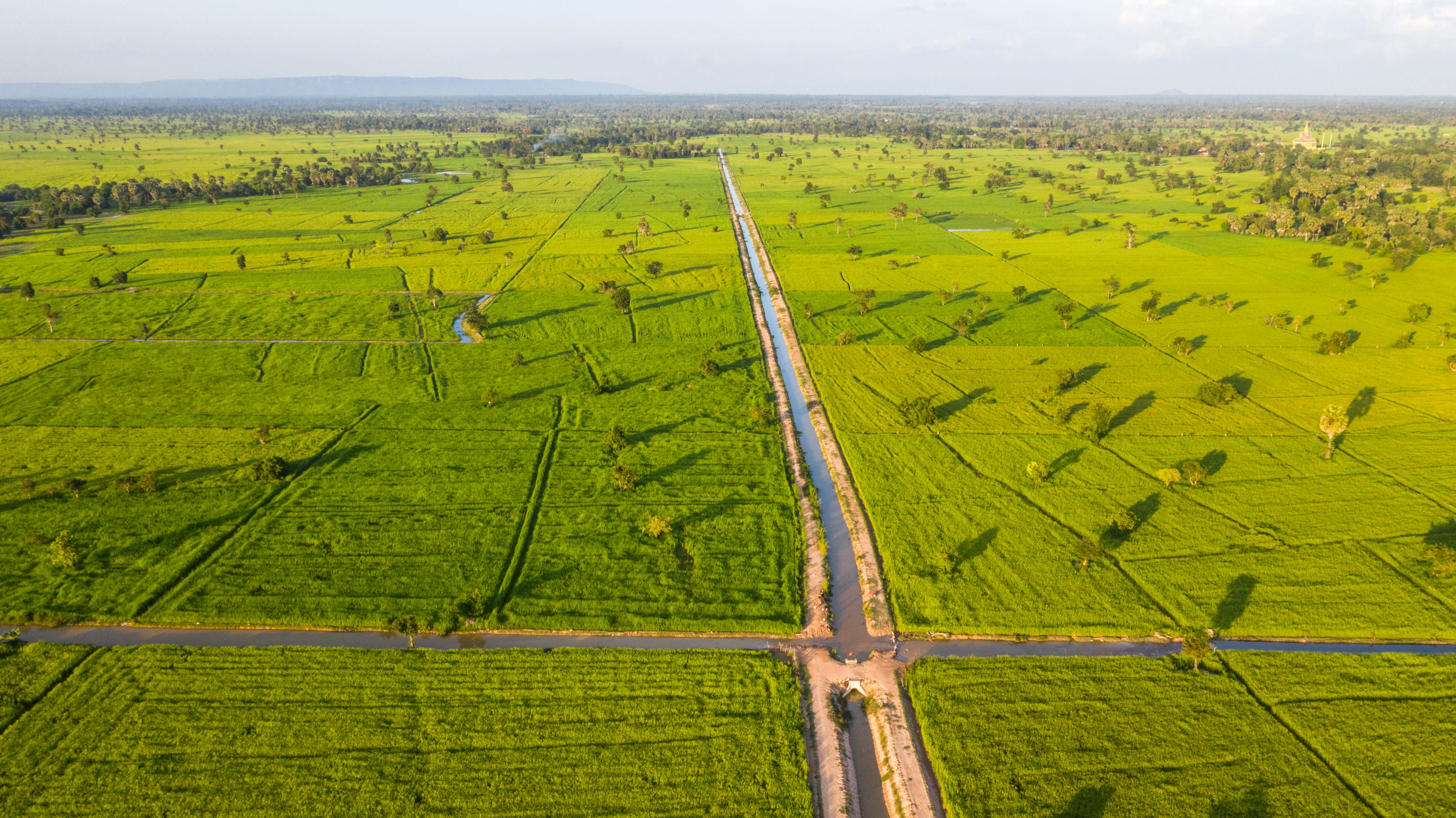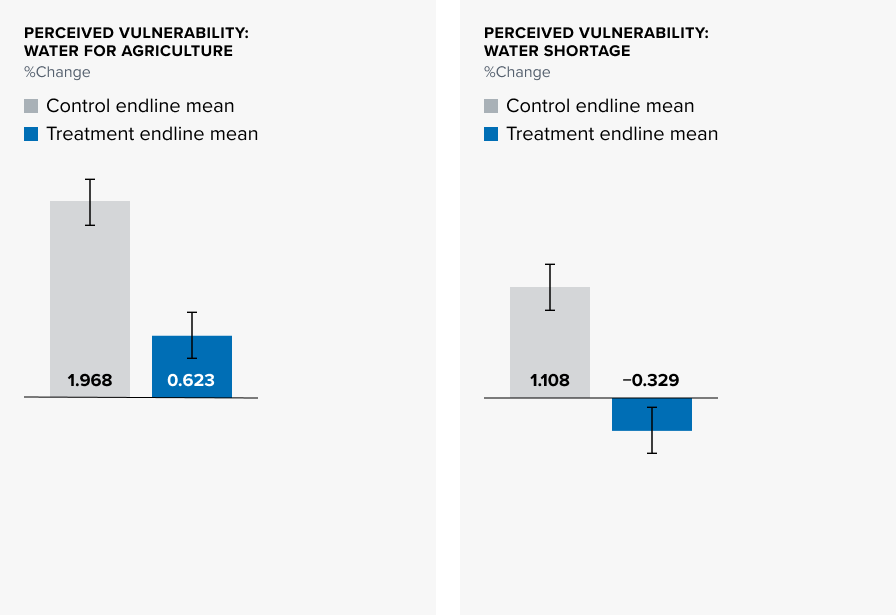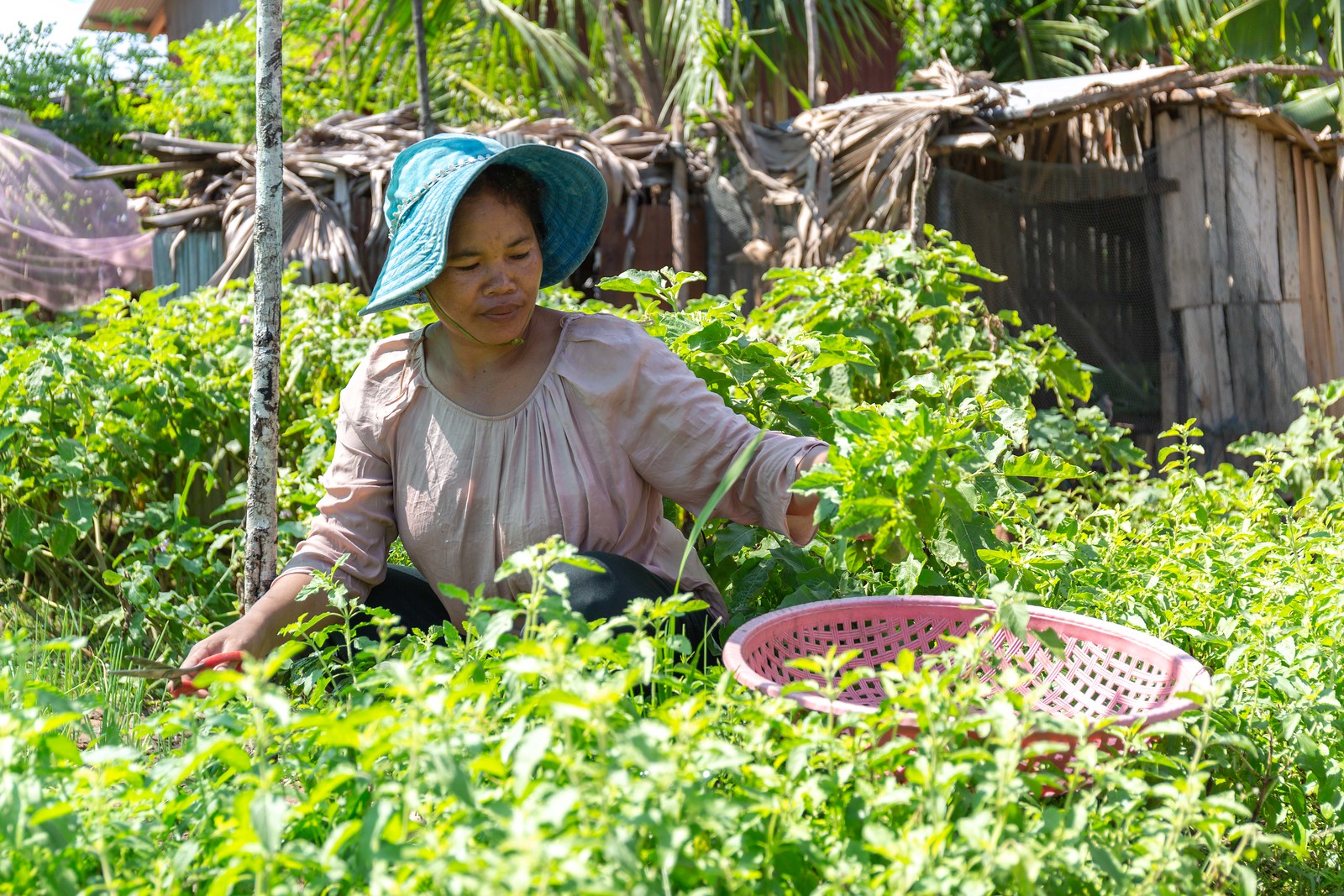Cambodia: Empowering farmers with knowledge and sustainable water supply
Published on 03 May 2023
Overview
Floods and droughts are recognized by the Cambodian government as one of the main drivers of poverty and migration. Weak adaptive capacity and poor infrastructure also exacerbate the country’s vulnerability to climate change. Investments in small-scale water infrastructure and targeted trainings on climate resilient practices can help revert the trend.
How sustainable water supply and enhanced agricultural knowledge can transform livelihoods
Small-scale water infrastructure investments can play an important role in increasing food and livelihoods security, adaptation and resilience to climate change. Empirical research¹ suggests that a reliable and affordable supply of water benefits local farmers by reducing exposure to droughts, lowering the risk of crop failure, while simultaneously reducing poverty though higher production and higher yields. A failure to address issues related to water availability bears negative repercussions on rural economies, livelihoods and decent work, pushing local inhabitants to move away from their native lands².
Evidence³ also shows that the adoption of appropriate climate-resilient technologies and practices by smallholders and households can ideally complement projects targeting improvements in water supply, enabling them to reach their maximum impacts on poverty alleviation, climate resilience and livelihood security.
Sustainable and Climate Resilient Livelihood in Cambodia
Investments in small-scale water management infrastructure and trainings on better agricultural practices were implemented by the government of Cambodia with UNDP’s support in the project “Reducing the Vulnerability of Cambodian Rural Livelihoods through Enhanced Sub-National Climate Change Planning and Execution of Priority Actions” (SRL), between 2017 and 2020. With funding from the Global Environment Facility (GEF) and the Sangkat Fund (CDF), the project worked with local authorities in 89 communes in Siem Reap (SRP) and Kampong Thom (KPT) provinces. Poor, landless and land-poor, female-headed households and households with disability living in rural and remote areas were also trained to adopt at least one resilient livelihood technique.
The project aimed at improving the availability and efficiency of water for wet season cropping, and for home-gardening and domestic animal during dry seasons. Increased irrigation would also encourage farmers to invest in additional inputs and improved production techniques, reducing the land left fallowed. This, combined with the adoption of better climate adaptation and mitigation practices, would increase farmer's income and food security, as well as reduce the likelihood of migration, contributing to strengthening climate change-resilience of households in the long-term. The long-term outcomes and impacts of the project contribute to achieving the country's targets under the Sustainable Development Goals (SDGs) 1 - 'No poverty', 2- 'Zero Hunger' and 13 - 'Climate Action'.
From Theory to Reality: How project’s inputs and activities are expected to generate impact
What the data tells us
Two rounds of extensive data collection from beneficiary and non-beneficiary farmers were done in 2018 and 2020 – covering 1,193 households from 44 villages in 10 districts. Evidence suggests that most of the expected benefits were yet to be materialized: given that most of the water management infrastructure built by the project (more than 90%) were not fully functional by the time of the endline assessment (May 2020), the effects observed in indicators related to the target stimulus promoted by the project – increase in the number of rice cultivation – are negative. This indicates that non-beneficiary households cultivated rice more times in a year relatively to beneficiary households.
However, data also shows that the investments in water supply seem to have affected positively the perceptions of vulnerability towards water availability for agriculture and water shortage between beneficiary farmers, as well as their likelihood to migrate/out-migration. Other indicators show no difference between beneficiary and non-beneficiary farmers. Findings also suggest that farmers take time to change behavior and adopt new practices/technology. Capacity building in natural or resilient agricultural techniques seemed to be not as appreciated as improvements in water availability by project beneficiaries in the short run as they consider their current agricultural practices adequate.

Note: The designations employed and the presentation of material on this map do not imply the expression of any opinion whatsoever on the part of the Secretariat of the United Nations or UNDP concerning the legal status of any country, territory, city or area or its authorities, or concerning the delimitation of its frontiers or boundaries.
| Coeff (T*t) | SE | p value | unit | |
|---|---|---|---|---|
| Total Annual Income | -0.058 | 0.2 | 0.774 | %change |
| Income from Rice Sale | -0.443 | 0.414 | 0.283 | %change |
| Income from Home gardening sale | -0.016 | 0.533 | 0.978 | %change |
| Income from Animal Sale | -0.027 | 0.225 | 0.905 | %change |
| Land left fallowed | -0.94 | 7.231 | 0.900 | %change |
| # of cultivation | -2.361 | 0.809 | 0.004 | %change |
| Outmigration | -1.027 | 0.380 | 0.007 | %change |
| Perceived vulnerability - drought | -0.457 | 0.551 | 0.406 | %change |
| Perceived vulnerability - flood | -0.055 | 0.5 | 0.914 | %change |
| Perceived vulnerability - water for agriculture | -1.345 | 0.469 | 0.004 | %change |
| Perceived vulnerability - water shortage | -1.437 | 0.445 | 0.001 | %change |
“While farmers appreciated the provision of hard infrastructures (e.g irrigation canals), they claimed to have farmed their whole life and know how to do it very well – what they think they only needed is more water to enhance production.”
— Findings from Focus Groups Discussions with rice farmers
Contribution to global knowledge
The on-the-ground evidence shows that, while the provision of increased irrigation has proven to be appreciated, changes in current agricultural practices might face resistance from local farmers – especially when targeting the extremely poor and vulnerable households. Beyond the need of quality data and rigorous estimation methods to assess impacts, considerations on the best and most adequate timeframe to conduct data collection are critical. The Cambodian’s experience underlines the importance for properly collecting data after the full materialization of project’s benefits.
Publication
References
[1] Hussain and Hanjra, 2004
[2] Warner et al., 2009
[3] D’Agostino and Sovacool, 2011; Chandra et al., 2017
SRL’s Impact Evaluation timeline
Steps to assess impact
- Inception (plan, design and team set up)
- Develop & pilot a survey instrument
- Conduct a baseline survey & analysis
- Programme/Project implementation
- Conduct follow-up survey & analysis
- Estimation of impact / final report writing
- Dissemination of findings/evidence
STATUS
Finalized
Start Date
July 2016
End date
December 2020
Survey firm
Green Innovation Services Co, Ltd. (GIS)
Technical Partners
UNDP
Global Environment Facility (GEF)
Approach to assess the impact
Mixed methods were used to assess the project’s impact. Assessment of the protect interventions on livelihoods and income generation are typically complex and may not be easily done by examining quantitative data only. Therefore, for the endline data collection, Focus Group Discussions (FGDs) between beneficiaries were conducted to assess their involvement and benefits from the project. The quantitative assessment followed a quasi-experimental approach (Difference-in-Difference), with 1,563 households surveyed at baseline (726 treatment and 837 control) and 1,219 at endline (551 treatment and 668 control). The final sample used for IE analysis comprised 1,193 HHs. Among them, there were 553 HHs respondents from treatment villages, and 640 from control villages. The assessment focused on five impact-related indicators: i) changes in income from different activities, ii) changes in perception of vulnerability towards several climate hazards; iii) changes in the annual number of rice cultivation; iv) changes in amount of farmland left fallowed and v) changes in migration behavior.
DIFFERENCE IN DIFFERENCE (DID)










